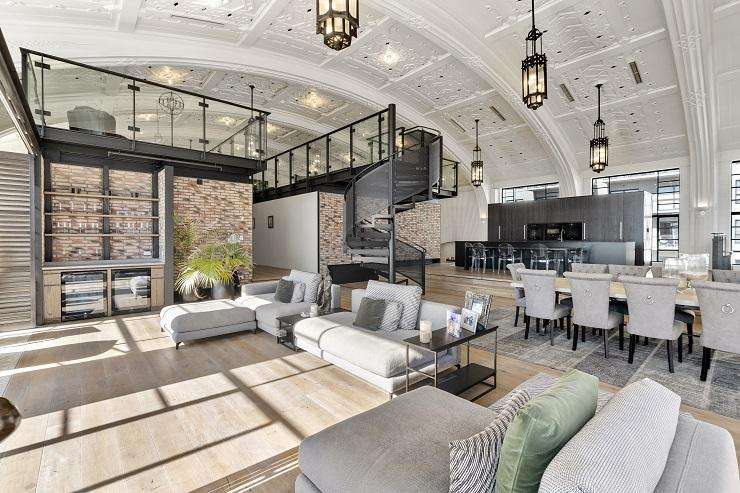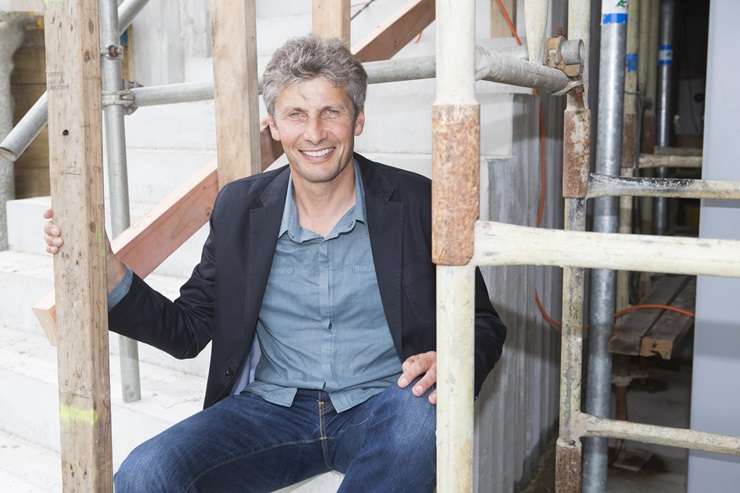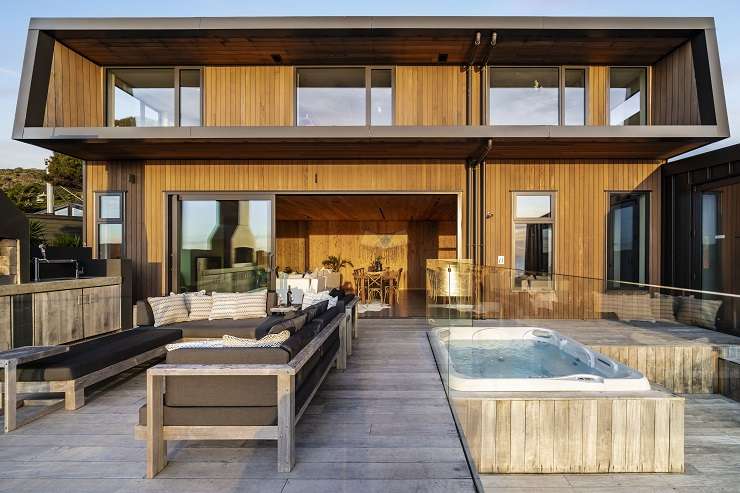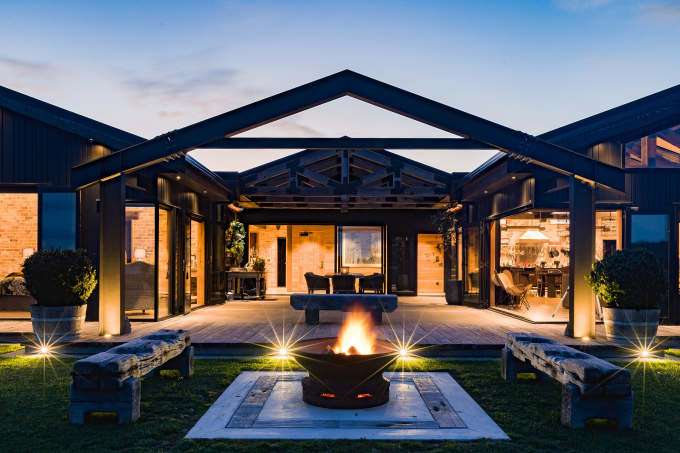In the UK there’s a house described as the “saddest ever” to feature on Grand Designs.
The lighthouse build on the cliff in Devon has been written about extensively; it took 11 years, blew out the budget, ended in divorce and is still on the market - but it’s big and beautiful and has stunning sea views.
People who go on the TV show put their heart, soul, relationships, and sometimes huge money on the line, but budgets can balloon, the weather turn and plans change.
In New Zealand, there have been some Grand Designs which have sold easily after featuring on the local version of the show, with agents saying the publicity was great, but there have also been homes which have failed to sell or which have gone on and off the market.
Start your property search
Read more:
- NZ trophy home sales: 'It’s about getting finance out of China'
- 90-year price explosion: Beachfront pad sells for $10.1m
- Pamela Anderson's Auckland party house sells for just over $2m
Wayne Shum, senior research analyst for Valocity, OneRoof’s data partner, says it’s hard to put a value on Grand Designs homes because they can be quirky and while the owner may have poured a whole lot of love into the build or renovation, it may not be to everyone’s taste so could take some time to sell.
“Really amazing houses but some of them are probably just a little bit too quirky for the bulk market.”
A theme of the show is watching costs balloon, be that a build on the wild west coast of Auckland or a lighthouse on the coast of Devon, and Shum sometimes see dollar signs attached to the word maintenance.
“If it costs you a lot to renovate it, unless it's done really well, chances are any repair bills will be above average.”
Costs regularly rise (in the UK “it’s always in locations where it rains a lot but no one saw it coming”) but on the other hand the homes are often architecturally-designed or renovated to beautiful standards, but they might not be in a location that everyone wants or where it’s easy to get a tradie.

Valocity senior research analyst Wayne Shum: “Really amazing houses but some of them are probably just a little bit too quirky for the bulk market.” Photo / Fiona Goodall
Shum says the data doesn’t show if owners get value for money when these homes sell. Because they are unique properties, and some of them hang around on the market for a while, they are hard to value, and the cost of the build does not always equal the value.
“Just because you spend $1.5m fixing it up doesn't mean you will get that back - you may get more but you make get less.”
Gary Wallace, an agent for Bayleys Remuera, marketed a stunning apartment renovation in the historic Heritage building in Auckland – the old Farmers building – last year which was withdrawn.
He says the owners could not find a buyer at the price level they wanted for their “restoration of love”.
The exposure given to the project by Grand Designs was great, Wallace says, but the apartment is unique and buyer appeal therefore limited: “It's a very specialist type of buyer for that type of product.”
The amount of work that went into the apartment was mind-boggling, he says.
“You've got to be a visionary and have a special type of fortitude to take something like that on.

A penthouse apartment in the former Farmers building in central Auckland featured in the 2020 season of Grand Designs NZ. It was listed for sale last year but withdrawn from the market after failing to find a buyer. Photo / Supplied

Former Grand Designs NZ host Chris Moller on-site during filming of the show in 2016. Photo / Supplied
“It's somebody that's on a personal mission, for whatever reasons, and they have a vision, which is fantastic but it's really a matter of if all that blood, sweat, and tears and that vision, is it going to be easily accepted by the people?”
A Piha property which failed to sell is one of the best houses former Harcourts agent Glen Foster says he has ever seen.
Listed for sale three times, the build was interrupted by Covid lockdowns and took nearly two years with costs ballooning from an original $1.3m estimate to well over $2m.
Foster, too, says featuring on Grand Designs was great for marketing and the campaign had a lot of interest with around 150 people coming to open homes and over 25,000 looking online.
He goes so far as to say he fell in love with the house: “The design was through the roof. The engineering behind it was completely out of this world, something I’ve never seen before.
“If I'd won Lotto I probably would have bought it. I just think the place was amazing - the architecture, the design, the layout, the views. You name it, it had it.”
The property did not sell because the expectations of the owners were not met, he says.

A house on Piha Road, in Piha, Auckland, also featured in the 2020 season of Grand Designs. It too struggled to find a buyer when it hit the market last year. Photo / Supplied

Britten Stables, in Christchurch, sold for $7.85m in 2021. It featured on Grand Designs in 2018. Photo / Supplied
A property which did sell quickly and well was an earthquake-damaged Christchurch house which once belonged to renowned New Zealand inventor John Britten.
Known as Britten Stables, the property was restored by Britten’s daughter and featured in Grand Designs NZ in 2018 and fetched $7.85m in November 2021.
Harcourts Grenadier agent Alison Aitken marketed the property and says it got a great price. The show got across the passion of the project and she says buyers felt confident the property at the end of the process was a lot better than when it started.
“I just think that whole story was quite fabulous. My experience was people said ‘we saw the house on Grand Designs, oh my god that's amazing.’
“It absolutely helped the process, absolutely. People felt they knew the house before they got there.”
A house in Mangawhai also saw great results after featuring on the show, attracting hordes of people through open homes.

Jetty House, in Mangawhai, Northland, sold at auction for $4m in November 2020. Photo / Supplied

Pocketspace Interiors founder Laura Heynike: "They just want to buy something that’s incredible and a bit more bespoke.” Photo / Fiona Goodall
The owners used recycled materials for much of the build and agents Nola and Ben Kloppers from ReMax say people were fascinated by the history of the various items, and featuring on Grand Designs also became part of the home’s story.
“Open homes were crazy; never had open homes like that before,” says Nola.
“It was a beautiful position in Mangawhai but definitely the Grand Designs part of it - because we mentioned it all through our marketing as well - I think that definitely encouraged people to come and have a look.”
Interior designer Laura Heynike of Pocketspace Interiors says paint and lighting can be changed and bathrooms renovated but architecture is harder to change and has to suit a buyer’s taste, but she thinks individuality is attracting people more than it used to, saying clients are bored with white walls, white kitchens and grey bathrooms.
“Generally, at that Grand Design level people are fairly time poor and they just want to buy something that’s incredible and a bit more bespoke.”
While a Grand Designs home can have almost every detail personalised to the owner’s taste, the build and finishes tend to be high end and materials and products are selected for good reasons, such as durability for their particular location, be that coastal or rural.
She also says while some of the homes may have smaller buyer pools than more ordinary properties, that is true of any homes above a certain price threshold.
- Click here to find more properties for sale














































































